Nail fungus or onychomycosis is not just a cosmetic defect of the skin, but a fairly serious disease that requires the correct approach to treatment. If help is not provided in a timely manner, deformation or complete destruction of the nail may occur, and sometimes the advanced disease is accompanied by damage to the internal tissues. This infection can be overcome in various ways, including traditional medicinal recipes and the use of disinfectants.
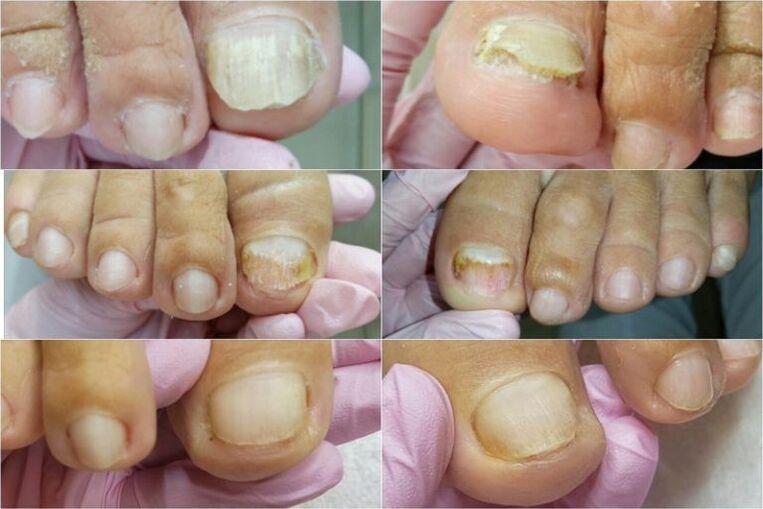
Signs of nail fungus development
Nail fungus is a common disease characterized by damage to the nail plate. You can become infected with it in public places, in leisure centers and just in everyday conditions. Spores of parasitic microorganisms live in household and personal care items, carpets and bedding long after disinfection. Therefore, there is a risk of reinfection.
The signs of the fungus differ at different stages of the disease. The first symptoms are quite mild. The patient does not attach great importance to the infection and takes the treatment lightly.
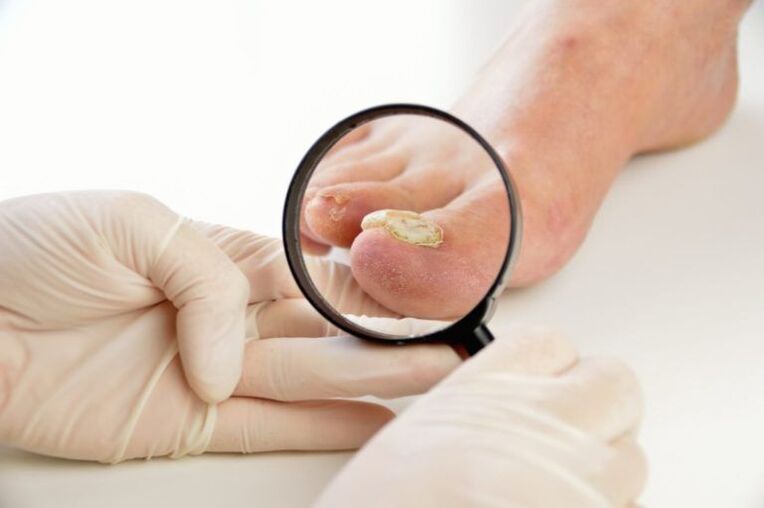
The disease itself begins to develop in the interdigital folds. Mild flaking and itching occur. The infection then attacks the most vulnerable areas on the legs - the nails. After some time, the fungus penetrates the internal tissue and begins to develop rapidly there. The following signs indicate this:
- the appearance of growths on the nail, thickening of the nail fold;
- the nail plate changes its natural color to a pale yellow shade and even becomes darker in the later stages;
- Cracks and removal of the top layer on the nail;
- burning, painful sensations that cause difficulty walking;
- Development of infectious agents that cause a specific smell;
- Redness of the skin on the affected finger.
How does mycosis become infected?
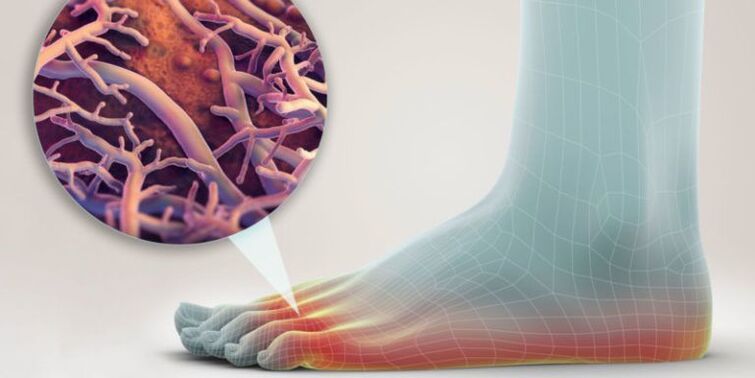
The appearance of nail fungus is due to the following factors:
- The presence of a parasitic fungus that triggers the development of the disease. The fungus is not caused by an infection, but by a number of different microorganisms, which is why the nature of the disease is not clear. Depending on the pathogen, treatment is prescribed so that the diagnosis is only necessary for the patient.
- Favorable conditions for the development of mycoses. Even if the virus enters the body through microtears in the skin, it does not pose a particular danger to humans: the immune system can easily cope with an unknown object. The risk of contracting fungi increases significantly in people who wear tight and uncomfortable shoes, are prone to excessive sweating, have fatty deposits, or abuse alcohol and tobacco. Long-term use of medication and reduced acidity in the feet can also weaken the body's protective function.
Without these two conditions, the development of nail fungus is not possible. To prevent its development, it is enough to follow the rules of personal hygiene, not to walk barefoot in public places (swimming pools, beaches) and not to wear other people's shoes and underwear.
What the fungus cannot tolerate
Fungal microorganisms are very resistant to external influences, but in some cases they cannot withstand them and die. Traditional medicine medicines and recipes inevitably contain special ingredients that have a detrimental effect on mycoses. These include some vegetables, iodine, vinegar and other organic products.
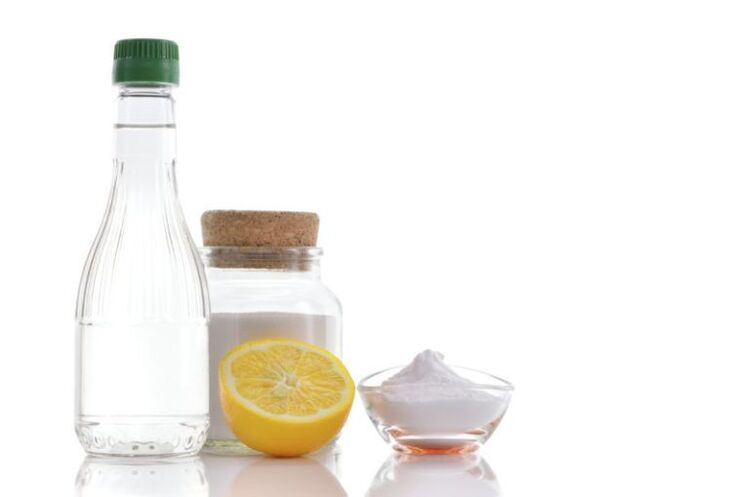
Traditional methods of combating nail fungus
Traditional methods help stop the spread of infection and neutralize it in the nail. The main advantage of such recipes is that they are easy to prepare and consist of effective ingredients that do not require large financial costs.
Vinegar is a type of chemical weapon that creates an acidic environment dangerous for infection. They can be used to treat nails, make compresses and baths. However, this is prohibited for open wounds and cracks on the fingers. Positive changes become noticeable after a month of using vinegar.
- For the recipe you need 2 tbsp. Vinegar and rubbing alcohol. Mix thoroughly and add 1 tsp. Glycerin. Apply 1 drop of the product to the affected nail and rub with gentle movements. Treat until the fungus completely disappears.
- Apple cider vinegar baths. Pour 2-4 glasses of liquid into a shallow basin and dip your feet into it. You can dilute it with warm water and add some baking soda to enhance the effect. Leave your feet in the container for 3 hours.
- Ointment for feet. Mix beaten chicken egg, sunflower oil (20 ml) and vinegar (40 ml). It is recommended to add Repudin (5 g). Apply the mixture to the nail and fingers.
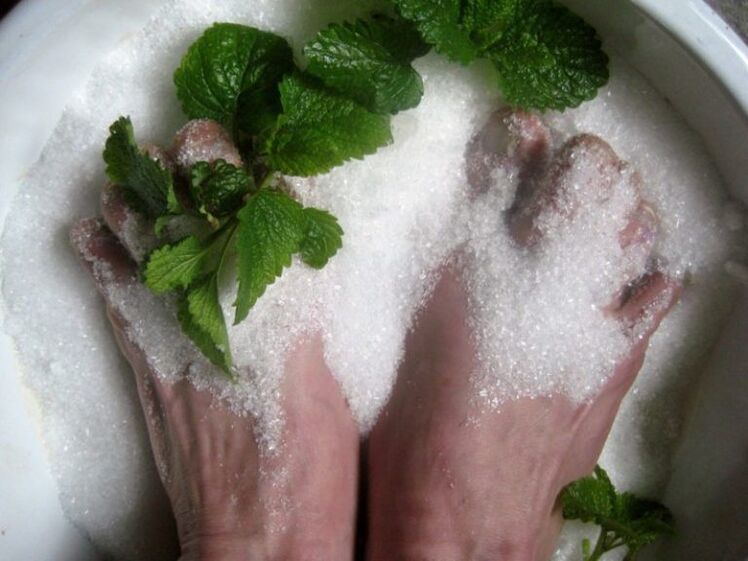
Salt has good anti-inflammatory properties, it also kills pathogenic bacteria and relieves inflammation of the skin areas. It is better to take baths in which the salt is dissolved in water. This means that the acids and alkalis it contains have a stronger effect on the affected areas. This treatment method has a double effect: the acidic environment and the high water temperature kill dangerous mycoses.
- Apply a few pinches of salt between your toes. Leave on for 1 hour. Repeat the process twice daily.
- Therapeutic baths. Stir 0. 1 kg of salt (table or sea salt is suitable) and 4 tablespoons of salt into 4 liters of water. Vinegar. Apply daily.
- Heat 3 liters of water. Add 2-3 tbsp. salt and 0. 5 tsp. Potassium permanganate (potassium permanganate), stir thoroughly. The duration of treatment is 1. 5 weeks. Can be used preventatively.
- Red pepper strengthens nails and strengthens the epidermis, allowing it to resist harmful bacteria. It contains many microelements that stimulate natural processes and improve blood circulation.
- Pepper mask. Mix 1 tbsp. ground pepper, 2 tsp. water and 3 tbsp. cosmetic hand cream. The product helps restore the nail plate. Add 2-3 drops of essential oil if necessary.
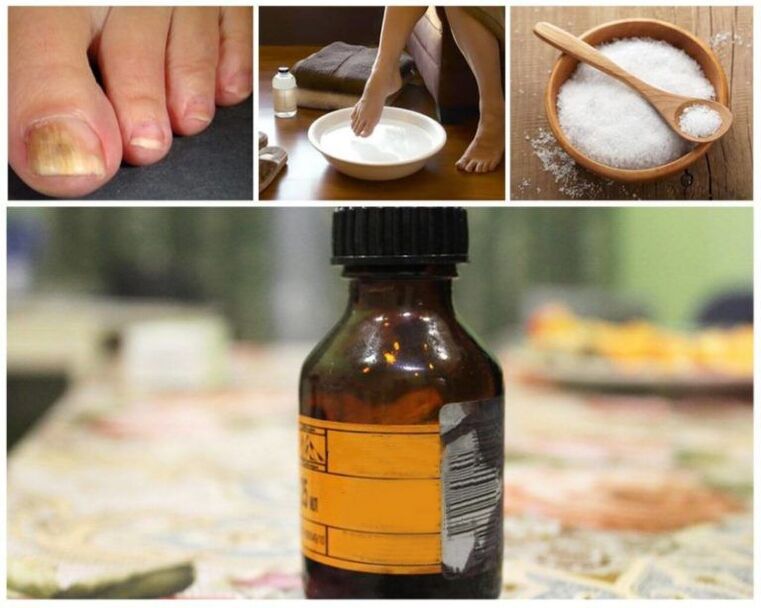
Iodine is a powerful natural antiseptic. It is mainly used for severe forms of fungus when the infection has already affected the tissue around the nail. This is an effective remedy that can be purchased at any pharmacy at an affordable price. It is used to clear infections from wounds and cauterize nail growths. Iodine also breaks down proteins that make up parasitic fungi.
- After each bath, you need to treat the skin of your legs, feet and nails with iodine. This disinfects and dries the affected areas. The procedure is carried out three times in a row after the previous layer of iodine has dried.
- Apply 1 drop of iodine to the affected nail, avoiding contact with the surrounding tissue. Beforehand, they can be spread with thick cream. Iodine affects the source of infection. Toenail fungus is afraid of it like fire.
- Lotions with iodine. Put the liquid on a cotton pad or ball and then apply it to the infection site.

Garlic for athlete's foot should be used with extreme caution: excessive concentrations can cause burns and skin damage. Only the correct use of the onion plant helps with onychomycosis.
- Garlic infusionFinely chop 2 cloves of unpeeled garlic and add vegetable oil (0. 5 l). Leave on for 3 days. Avoid exposure to sunlight. Take 1 tbsp orally for 30 days. daily.
- Horror. Take 1-2 cloves of garlic and chop them with a knife or in a blender. Apply to the nail. Before applying, it is necessary to steam the nail plates by holding them a little in hot water with the addition of lemon juice.
- Alcohol tincture. Pour 2-3 minced garlic cloves into ¼ cup. Let rest for 2 days. Treat your nails with the finished product in the morning, afternoon and evening.
What's so scary about nail fungus?
Nail fungus is afraid of the following factors:
- An acidic environment that is aggressive to the fungus. To make it, you need ordinary vinegar or an acid (salicylic, orthoboric). These substances can be used as stand-alone remedies by applying them to a cotton pad or swab and then to the affected areas. With regular use, rough tissue becomes softer and skin tags become smaller. Due to the acidic environment, mycoses also have difficulty penetrating deeper layers of the skin.
- Antiseptics and disinfectants. These drugs prevent decomposition processes on the surface of open wounds, are suitable for tissue treatment and destroy all infections. The most common drugs in this group include tablets and ointments based on ketoconazole and other substances used to eliminate fungal infections.
- High temperature. Above 60 degrees, the microorganisms' chances of survival are almost minimal. At this temperature it dies. Their structure is destroyed so that the disease stops and disappears completely. As the temperature increases, the healing process accelerates. Shoes and socks are treated this way to kill any spores.
Compliance with hygiene rules
Maintaining good hygiene is the most important requirement for people who do not want to become infected with fungi. To protect yourself from disease, you must:
- disinfect shoes and wash socks regularly;
- use personal cosmetics;
- keep the body clean;
- process nail tools;
- Do not go barefoot on beaches, swimming pools and other crowded places.


















